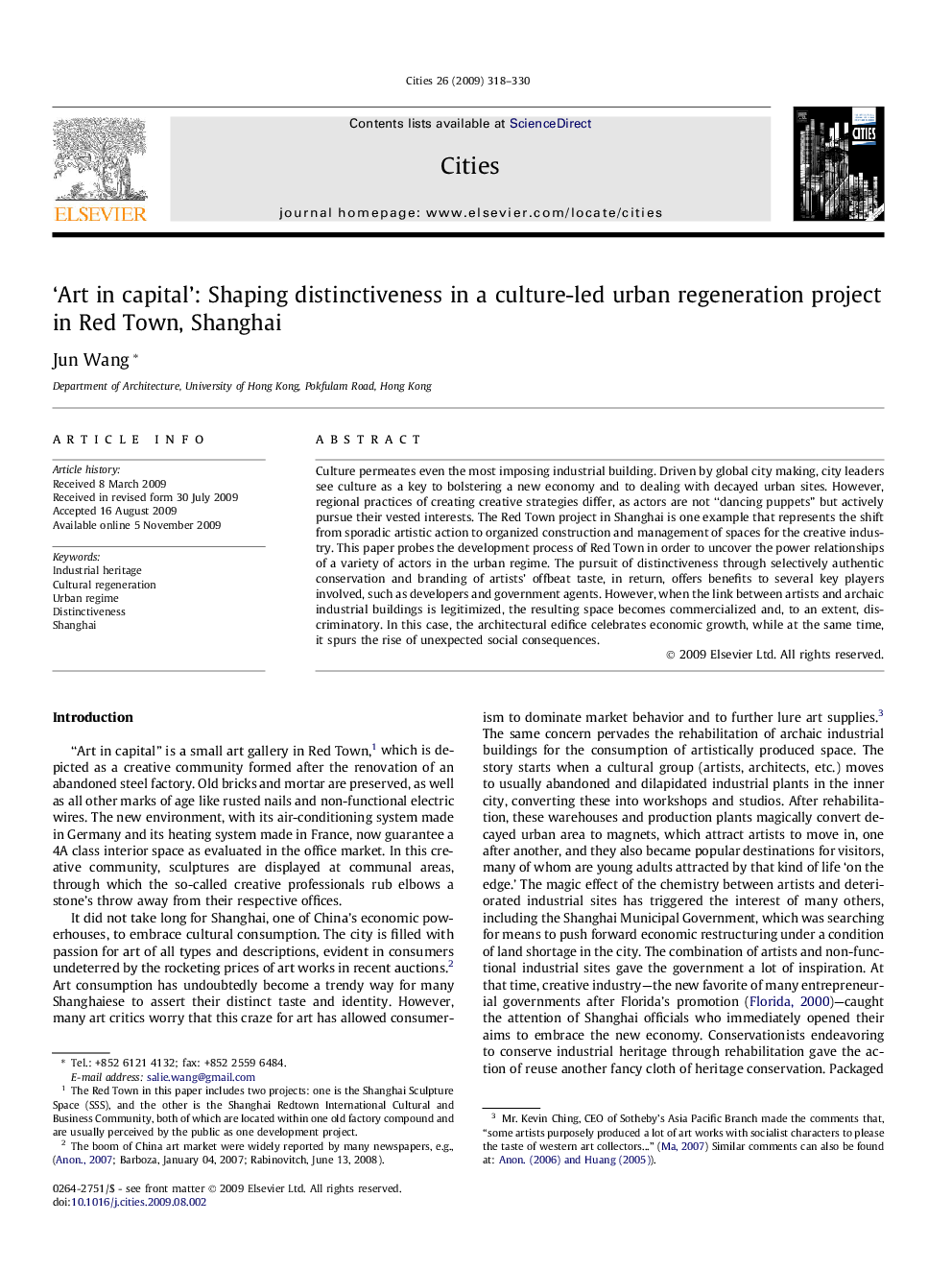| Article ID | Journal | Published Year | Pages | File Type |
|---|---|---|---|---|
| 1008817 | Cities | 2009 | 13 Pages |
Culture permeates even the most imposing industrial building. Driven by global city making, city leaders see culture as a key to bolstering a new economy and to dealing with decayed urban sites. However, regional practices of creating creative strategies differ, as actors are not “dancing puppets” but actively pursue their vested interests. The Red Town project in Shanghai is one example that represents the shift from sporadic artistic action to organized construction and management of spaces for the creative industry. This paper probes the development process of Red Town in order to uncover the power relationships of a variety of actors in the urban regime. The pursuit of distinctiveness through selectively authentic conservation and branding of artists’ offbeat taste, in return, offers benefits to several key players involved, such as developers and government agents. However, when the link between artists and archaic industrial buildings is legitimized, the resulting space becomes commercialized and, to an extent, discriminatory. In this case, the architectural edifice celebrates economic growth, while at the same time, it spurs the rise of unexpected social consequences.
